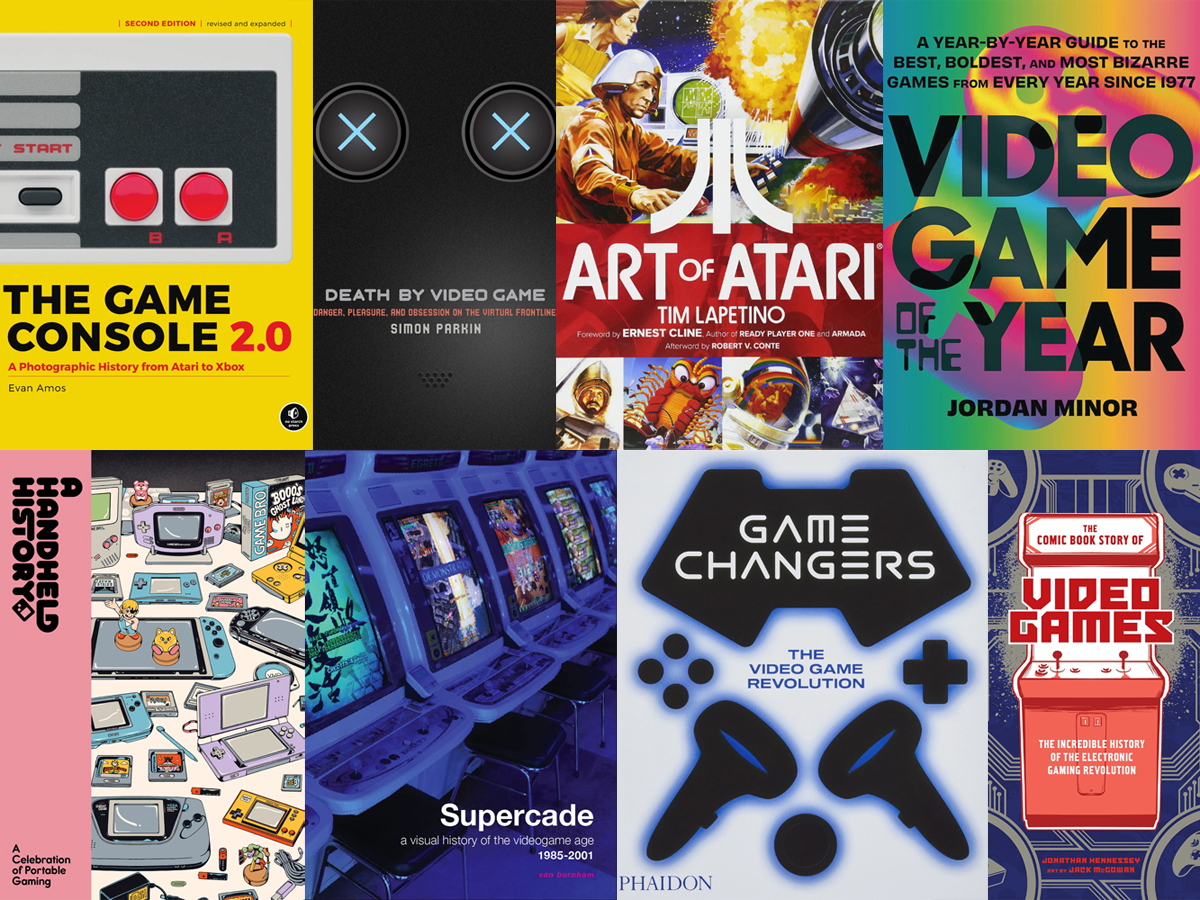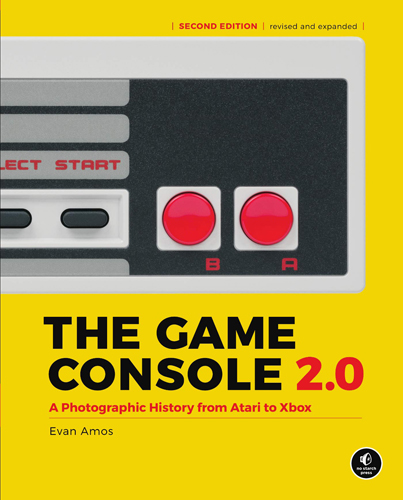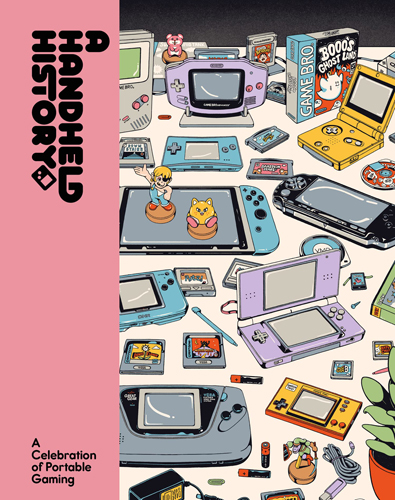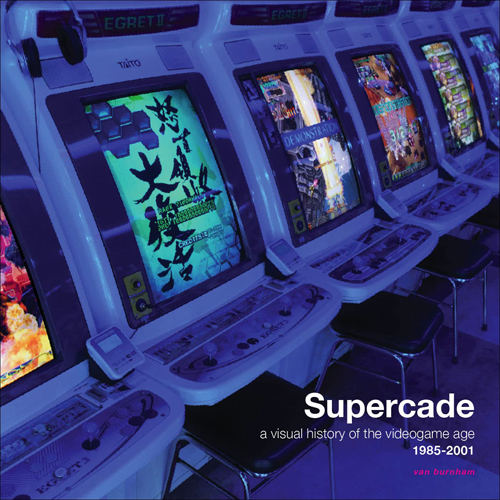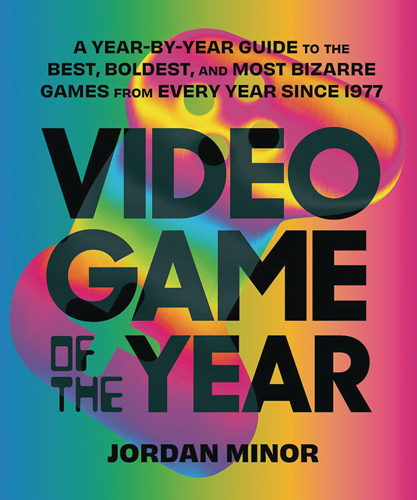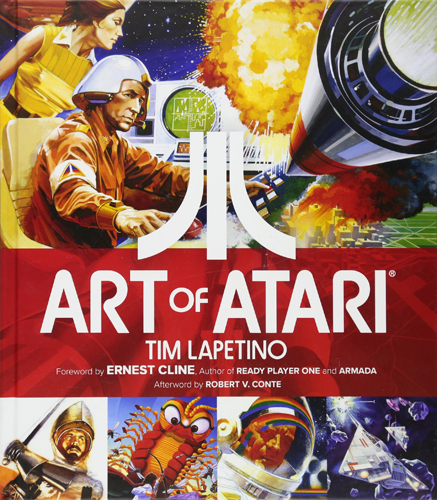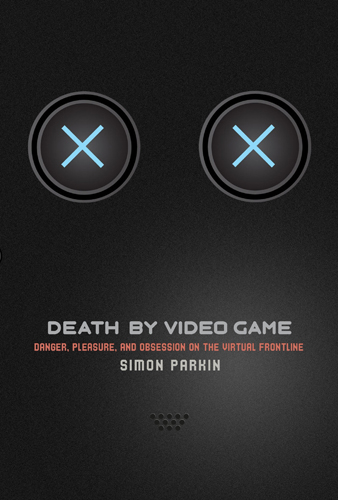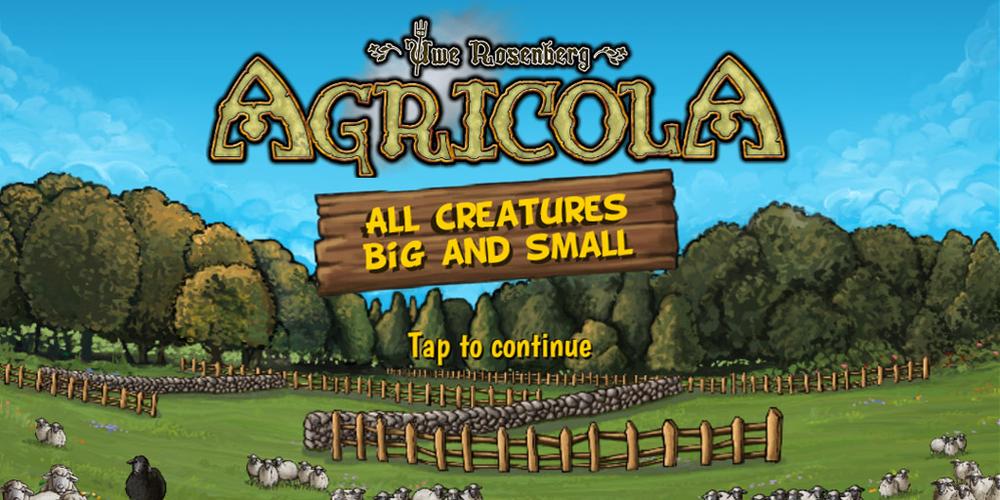Lately I’ve been playing a game called Arcade Paradise—it’s available on various platforms, but it showed up on Xbox Game Pass so I decided to give it a shot. In the game set in the early ’90s, you play as 19-year-old Ashley, and you’ve just been put in charge of running an old laundromat, one of your dad’s old properties. You spend most of your time picking up trash, running the laundry machines, emptying the token hopper, and occasionally fixing the toilet when it’s backed up. But in the back storage room, there are a couple of video game cabinets. It’s nothing fancy—they’re just crammed back there next to some shelves of junk—but you get the idea that you could maybe make more money with an arcade than with the laundromat.
With a little bit of help from your older sister, you’re able to expand a bit, knocking out the back wall into a garage space, and with some of the cash you’ve earned, you add to your collection of games. Although none of the games-in-the-game are actual licensed IP, you can clearly see what inspired them: Galaga, Missile Command, Qix, Pac-Man. The game is a bit of a time-management game as you keep up with your various maintenance tasks, while also trying to scratch items off your to-do list … and play some video games while you’re at it! There’s a storyline there, figuring out how to run the business despite your overbearing dad (who only shows up as a faceless voice on the answering machine), but a lot of the fun comes from the fact that you can walk around and actually play all of the arcade games, each of which has its own list of achievements to earn.
So why am I telling you about this video game here in Stack Overflow? Because today’s column is all about video games. Playing Arcade Paradise while poring over these books was a double hit of nostalgia. While I was reading about the Golden Age of arcade games, I was reliving it a little bit in the game. Today’s books include celebrations of console games and handheld games, explorations of significant titles and companies in the history of video games, and an investigation into what makes video games so engaging. Most of these are coffee table books—big, oversized tomes that are fun to flip through while lying on the floor (maybe while playing a few video games?).
The Game Console 2.0: A Photographic History from Atari to Xbox by Evan Amos
Evan Amos originally got into photographing old game consoles because of Wikipedia: there simply weren’t a lot of copyright-free photos of many of the more obscure consoles, so he started uploading some pictures of his own consoles. He eventually ran a Kickstarter campaign to purchase even more consoles, which resulted in this book. (The “2.0” in the title is because this is the second edition of the book, not a reference to a new console.)
The book is arranged in roughly chronological order, divided into sections that represent the generations of video game consoles. The subtitle says “from Atari to Xbox” but that’s mostly for the alphabetical reference—it actually begins with the Magavox Odyssey (1972) and goes up to the Xbox Series X|S and PlayStation 5 (2020). Each console gets a page with some basic facts like the launch price, units sold, CPU and RAM, and the number of games released for the console. This is accompanied by a photograph of the console itself, and a few (usually kind of dry) paragraphs about its significance. In some cases, we get more detailed photos: exploded views of a console or controller, or photos of variant models or accessories.
It’s a really fascinating trip through video game history, and one of the things I found particularly interesting was the sheer number of companies that tried to get into the console market, especially in the first few decades when video games were really taking off. In the mid-1990s, I worked at Waldensoftware at my local mall while I was in high school, and I remember getting to play with some of these consoles that didn’t quite make it: Atari’s last attempt, the Jaguar, and the incredibly pricey 3DO. I loved seeing the shifting trends, and learning about so many obscure consoles and handheld gaming devices that I’d never even heard of.
The one thing that this book doesn’t show is the games themselves. That’s okay—just the hardware is a big enough scope to fill over 300 pages—but it would be cool to see the progression of graphics capabilities over the course of video game history along with the consoles themselves. Still, this is a very cool resource for anyone looking for a timeline of gaming consoles.
A Handheld History: A Celebration of Portable Gaming by Lost in Cult
This book takes a deep dive into portable gaming. There are essays by a host of different writers on different topics: the GameBoy’s lack of a backlit screen, the impact that Pokémon Yellow‘s choice of character gender had on a young girl gamer, how the PlayStation Vita helped somebody find a community.
There are plenty of images throughout: artsy close-ups of consoles, oodles of photos of all the different trim versions, cover art for games, and illustrations accompanying some of the essays. (Like The Game Console 2.0, it does not include much in the way of screenshots of the games themselves.)
The book is arranged first by manufacturer, then roughly chronologically, and the first half of the book is entirely Nintendo, with a brief entry on their Game & Watch devices before diving into the long history of GameBoy variants, and then the DS and Switch. Next up is PlayStation (the PSP and the Vita, plus a page about the only-in-Japan PocketStation). Then there’s the Sega Game Gear, and the rest of the book is a collection of “everything else” like the Atari Lynx or the much-more-recent Playdate.
I never got into portable gaming quite as much—my younger brother had a GameBoy when we were kids, but I never got any of the portable consoles myself—so I feel a little less nostalgia toward these stories, but I still enjoyed paging through this and learned a few things about handheld games. I did feel like the writing was a little uneven—some of the contributors could have used a little more editing, while others were engaging and made me want to experience the games they described. It’s a nice collection of stories that cover a broad range, and if you love portable gaming it’s worth checking out.
Game Changers: The Video Game Revolution by Phaidon Press
This book is a celebration of 300 notable games, consoles, and companies, spanning from 1889 (Nintendo) to 2022 (Dorfromantik). Each entry gets a page (or occasionally two), with a brief description and some screenshots—ah, now here we actually get to see the games themselves! There are some icons that indicate the type of game, the platform, and features like multiplayer, 2D vs. 3D, and so on.
One interesting choice made for this book was to put everything in alphabetical order rather than chronological, so you’ll get interesting juxtapositions like Kingdom Hearts next to King’s Quest or Pong followed by Portal. Rather than advancing through video game history as in the previous two books, Game Changers lets you bounce around from photorealistic graphics and online multiplayer to chunky pixels and arcade cabinets. It took a little to get used to, but I actually enjoyed the variety. The main gripe I have about the order is that somebody needs to tell Phaidon that you don’t include articles like “a” and “the” in your alphabetization. And also there’s no reason “Nintendogs” should fall between the Nintendo Entertainment System and the Nintendo Switch. That’s not how alphabetization works, folks.
I had a few other complaints: typeface used in the book—it’s a wider, sans serif font that I imagine was chosen to look high-tech, but I found it a bit hard on the eyes. I also wish there were captions on some of the photos, particularly in the case where the entry was a games company: these often had four screenshots of different games, but no hint as to what games they were if you didn’t know already. Finally, the entries themselves were written by a team of eight writers, and (as with A Handheld History) some of them are stronger writers than others. One in particular just liked to use “such as” in every entry but almost always with incorrect punctuation.
Any book like this is likely to include a lot of your favorites but also have some striking omissions. Where is Atari’s Adventure, for instance? And how could they have missed Metroid? But reading through this also brought back memories of games I played as a kid: I loved Lemmings! And I’d all but forgotten about playing Boulder Dash on our old Apple computer. There are also so many games that I never got to play or had never even heard of, and paging through this book made me wish there were a way to try them all out.
That’s one of the things addressed in the opening essay by Simon Parkin: video games are a form of media where even many of the most influential pieces from its history are increasingly difficult to preserve. Hardware fails and can’t be replaced; software isn’t easily ported to other platforms. For many of the games in this book, the closest I’ll get is probably a couple glossy photos in a book, or maybe looking up a YouTube video. Game Changers offers a sweeping view of the video game landscape and showcases its breadth.
Supercade: A Visual History of the Videogame Age 1985-2001 by Van Burnham
This is actually the second Supercade volume—the first, covering the period 1971–1984, was published in 2003 but I don’t have a copy of that one. In Game Changers, Parkin touched on the tricky issue of preservation when it comes to video games. Supercade is one attempt to capture that history—in addition to being a book about video games, it’s paired with the Supercade Collection, Van Burnham’s attempt to preserve all of the games featured in the books.
The book itself is a big softcover—it’s made of that sort of dense, glossy paper used in magazines that makes the book feel particularly heavy for its size, but it’s great for the vivid graphics splashed across the pages. The tiny white text on black paper isn’t great for my eyes, and each section break has an even tinier chyron-like strip of text that I have to get really close to see. (If you happen to need reading glasses, good luck!) The images, though—these are often full-bleed, in some cases possibly bigger than they appeared on my TV screen at the time! There are even some fold-out spreads here and there for some panoramic views.
Supercade is arranged chronologically and the sheer number of titles and consoles covered is impressive. The descriptions vary in length: some entries get nothing more than a glorified caption paired with the image, while others (particularly the game consoles) may get an entire essay.
1985 to 2001 was a momentous time in gaming. The arcade boom was over, and Atari was spiraling downward (in no small part due to the disastrous E.T. game). But then Nintendo came along with the NES. This period is a competitive one for console gaming and PC gaming, before the field really narrowed down to a few major players. (And, I’ll admit, I have a particular nostalgia for this time period because it overlaps my own childhood, adolescence, and early adulthood.)
Supercade is an awesome timeline of video gaming, and definitely makes me want to check out the first volume. This second volume took 20 years to complete—so I look forward to seeing volume 3 in another couple of decades!
Video Game of the Year by Jordan Minor
The subtitle for this book is A Year-by-Year Guide to the Best, Boldest, and Most Bizarre Games from Every Year Since 1977. Where the previous books cover hundreds of titles and try to encompass a huge scope of video game history, Jordan Minor sets himself the impossible task of picking just one title from each year and making a case for why it was the Game of the Year.
Unlike the other books I’ve covered so far, this one has no photos or screenshots (though there are game logos). Instead, Minor’s essays are paired with illustrations by Wren McDonald, often depicting gamers playing the game or a stylized depiction of the players in the world of the game itself. Minor gives each game its own “award” title that hints at why it was selected: The Legend of Zelda is “The Adventure of the Year”; NBA Jam is “The Slam Dunk of the Year”; Halo: Combat Evolved is “The Xbox Savior of the Year.”
While I really enjoyed the meandering journeys through video games offered by the previous books, the smaller focus of Video Game of the Year feels a bit more intentional, and gives you more time to ponder each of the chosen titles. Again, you may not agree with every choice, but they’re all recognizable, Hall of Fame titles. (There were only two games on the list that I hadn’t at least heard of.) It’s a nicely curated selection of games and covers the entire history of video games (up until 2022).
Art of Atari by Tim Lapetino
This one’s an older book, but it covers an older topic, so I figured that’s okay. GeekDad Jim Kelly wrote about Art of Atari back when it was first published, but I’ve also had a copy sitting on my shelf (okay, my floor) and it was a great complement to the other video game history books I was reading.
The old Atari games, of course, did not have the amazing visuals that video games have today. Pac-Man was blocky instead of round, the hero in Adventure was nothing more than a square. But on the box cover and the cartridge itself, there was amazing artwork that helped steer your imagination. Super Breakout became a sci-fi story about an astronaut facing a strange rainbow-colored force field. The knights-on-ostriches in Joust were so much more detailed (and hilarious) when you pictured the cover art.
This book highlights many of the (often uncredited) artists who created some of the most memorable visuals for Atari games, and pairs the illustrations with the actual game screenshots. It really shows how much the illustrations added to the experience of the game, and made for a fun trip down memory lane for me.
The Comic Book Story of Video Games: The Incredible History of the Electronic Gaming Revolution written by Jonathan Hennessey, art by Jack McGowan
This much-smaller book is another retelling of video game history, but it takes a very different approach—and not just because it’s in comic book form. The other books tend to start their histories around the 1960s, with Spacewar! and occasionally a mention of some of its predecessors. This book takes us back a bit further, to the invention of the light bulb. It traces a path through various technological advances that made video games possible, along with the cultural shifts that led to arcades and coin-op amusements, eventually reaching the point at which somebody could control light on a screen—and even that still predated actual computing. The story progresses, with frequent jumps back in time to pick up other threads, along to arcade machines, home consoles, and video games on computers. Along the way, there are spotlights on many of the significant figures: Ralph Baer, Nolan Bushnell, Jerry Lawson, Shigeru Miyamoto, and more.
The comic book format allows for some fun visuals: while some portions are straightforward depictions of the events that Hennessey describes, McGowan often inserts videogame characters or features into the illustrations. Thus we have things like Charizard admiring the ENIAC, Bushnell driving a Warthog from Halo, and a zombie from Plants vs. Zombies pointing out the Atari 2600’s “Brains!” There so many little references and I’m sure I didn’t catch them all. While it may not be as comprehensive as some of the other books in terms of the number of games it mentions, this book does a good job of pulling together the various threads that led to the rise (and fall, and rise again) of video games.
Death by Video Game by Simon Parkin
This book with the scary title opens with a story about a young man in Taiwan who died in 2012 after playing League of Legends for about 23 hours straight. Parkin also mentions some other stories about people who have died while playing video games, but instead of investigating the dangers of video games (as you might expect from the title), he uses these stories as a jumping-off point to ask the question: what makes video games so compelling? What is it about them that some players lose themselves in the play (usually, of course, without dying in the process)?
Along the way, we do get bits and pieces of the video game history that have been included in some of the other books in today’s column, but here it’s often less about the big historical moments and focuses more on the personal anecdotes. Parkin doesn’t just lay out a bunch of facts, but is trying to tell a compelling story, so he sometimes circles back to Chen Rong-Yu, the Taiwanese man who died, and dives a little deeper into his story, and then picks up a trail somewhere else. We meet Kurt J. Mac, on his journey to reach the edge of the world in Minecraft. (At the time of this book’s writing, Mac had been trekking for three years; I just checked and he’s up to twelve years now and still going!) We’re introduced to professional eSports teams who live and train together. We ponder games that are violent and games that are about healing.
Ultimately, Parkin neither condemns nor absolves video games: he acknowledges the ways that they can be virtual utopias for some players, while also reinforcing problematic values. But the potential that video games hold continue to draw in countless people around the world, and this book helps us to understand that attraction at least a little bit more.
My Current Stack
I’m currently reading The Archive Undying by Emma Mieko Candon, a sci-fi book about giant cities run by AIs that have become corrupted, as well as the short story collection The Book of Disbelieving by David Lawrence Morse. But, since we’re soon entering spooky season, I’ve grabbed a big stack of monstrous comic books and plan to start working my way through those to see if we’ve got some good selections for October!
Disclosure: I received review copies of the books in this column. Affiliate links to Bookshop.org help support my writing and independent booksellers! Death by Video Game includes an Amazon link because it seems to be out of print and harder to find.
